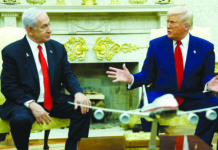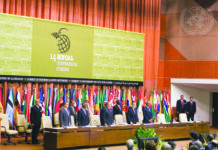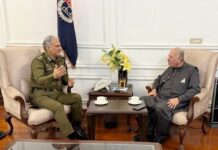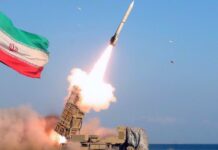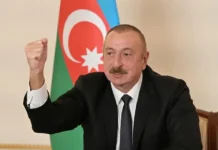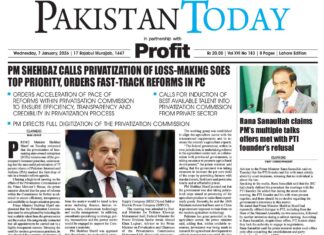In the ever shifting theatre of global militancy, women are no longer just sitting in the wings, but have, unfortunately, stepped into the spotlight of terrorism. Once upon a time, terrorism was seen as a man’s war but is now ideologically converting into women’s work, where women are radicalized, recruited, and repurposed as suicide bombers.
Women are radicalized, whether driven by convictions, coercion, or the seductive pull of identity and belonging. Now terrorism is shifting its dynamics from male-centric to female-centric jobs. Terrorist organizations are actively seeking women, educated, delusionally, and disturbingly inspired to join terror laboratories, not just as supporters but as symbols of global militancy disguised in veils and hijabs. This is not feminism gone rogue, but fanaticism wearing mascara.
Correspondingly, practical security reforms are equally significant while countering terrorism and insurgency. Gender-specific risk mapping must not ignore areas the most vulnerable to women radicalization due to socio-economic and marginalization factors. In post-conflict zones, individuals are more likely to pursue militancy as a profession, thus feminist peace corps and entrepreneurship hubs can ideologically and economically displace incentives provided by terrorist organizations. Re-education of female militants led by religious female peacebuilders through both traditional and digital methods can reduce the risk of female involvement in radical behaviour. Collectively, these measures enable a shift from a reactive to a preventive approach, incorporating gender dimensions at the heart of both global counter-terrorism and counter-insurgency efforts
In addition to that women are often perceived as solely victims of war and conflict around the world, yet they are engaged in multifaceted roles. They act not only as innocent survivors but also as supporters, sympathizers, recruiters, and even fighters in globally recognized insurgent and terrorist organizations.
Organizations such as Baluchistan Liberation Army or BLA’s Majeed Brigade, Nigeria’s Boko Haram, and the Islamic State of Iraq and Syria (ISIS) have actively recruited women for their political purposes. At the same time. women play a significant role in global peace and security, serving as active peacebuilders and peacekeepers in the UN’s Peacekeeping missions. The inherent duality and complexity in women’s roles underscore the need for gender-oriented counter-terrorism and counter-insurgency frameworks.
Moreover, contemporary counter-terrorism frameworks often lack a nuanced understanding of the complex role that women play in violent extremism activities around the globe. The lack of actual understanding of women’s roles stems deeply from the entrenched societal essentialism where women are viewed as passive, domestic figures, homemakers, and inherently peaceful, caring, and nurturing. Such a lack of real understanding of women’s role and gendered assumptions based on social constructivism leads to ineffective policy responses to female radicalization and, then, militancy. The long history of women’s involvement in political assassination shows that women, often viewed as peaceful, sometimes play brutal roles such as terrorism.
Indeed, from long ago, women have been involved in violent extremist acts. Such as in the ancient Mauryan and Gupta periods, and it is well documented in Kautilya’s Arthashastra that women were used as spies, poisoners, and seductresses for political motives. The same tactics are being used by modern male and female terrorists but in different ways with increasingly changing tactics of warfare and terrorism. These examples challenge the existing socially constructed notions of female passivity and highlight that violence does not solely belong to men.
The persistent underestimation of women as politically and socially violent has led to the oversight of gendered dimensions of terrorism in counter-terrorism efforts. The limited understanding of women based on stereotypical perceptions grounded in social constructive roles has hindered gender-sensitive policy frameworks. Effective counter-terrorism strategies must move beyond the essentialist approach and recognize the diverse, and sometimes violent, roles women play in modern times exemplified by the ancient history of conflicts and wars.
Women are often recruited by terror groups to achieve specific strategic objectives that male terrorists may struggle to fulfill. Firstly, women offer tactical advantages, particularly in the context of Islamist-inspired terrorists, where terrorism intersects with cultural and religious norms. In many societies, religion is followed with strict principles for the security of women and children, where women wearing veils or burqas are subjected to less scrutiny at security checkpoints. Societies view these security checkpoints as against religious principles and societal norms, discouraging women being searched. Terrorist organizations utilize this security loophole for their political objectives, using women as transporters of explosive weapons under their garments (burqas). The use of women as transporters reduces the risk of detection, as they are not subjected to any security measures disguised under cultural norms. Thus, women play their role as operational force multipliers by bypassing conventional security measures. This freedom of security thus leads to the execution of attacks with greater effectiveness and surprise.
Secondly, terrorist organizations use women for propaganda and recruitment purposes, utilizing their ability to attract the attention of global media disguised under feminist beliefs. Women are always considered symbols of care, peace, and vulnerability, and when appearing on traditional or digital media with guns and grenades get more attention. This stark contrast between societal expectations and their militant role, gains global attention around the world, serving ideological motives of their respective terrorist organizations.
However, terror groups offer women a mixture of ideological, emotional, and material incentives. Ideologically they portray terrorism to women as a divine duty to achieve their political objectives, justifying it through basic needs of women and revenge. They manipulate and glorify the concept of martyrdom, promising to give them titles of ‘heroines’ and ‘lionesses’ once they sacrifice their lives for the organization’s greater cause. Women are told that they should avenge themselves against those in power, for the blood of their loved ones (alleged terrorists).
Secondly, terrorist organizations promise to give women empowerment and social inclusion which they fail to achieve in a patriarchal society. For instance, the BLA has increasingly recruited women by framing their participation based on justified resistance against both state and gendered marginalization. Terrorist organizations integrate distorted forms of feminist empowerment into their ideological framework. The BLA manipulates the real essence of feminism to serve its own political objectives by turning the quest for liberation into a tool of insurgency.
Lastly, terrorist organizations use material incentives that address basic human needs and vulnerabilities. These material incentives ranging from cash, food, and clothing are used as strategic tools to recruit women with poor and frustrated backgrounds. For women, it is an opportunity to gain these incentives as they have remained sidelined from the mainstream political spectrum and social structures for a long time.
For instance, ‘Boko Haram’ distributed food packets and clothing to recruit Nigerian female militants. They distributed these food packets and cash in areas abandoned by the state, proving poverty leads to frustration and aggression. This is a strategic tool used by terrorists to label themselves as protectors and providers while labeling state governments as oppressive and tyrant. As a result, women joined the ‘Boko Haram’ insurgent group under the false promise of stability, protection, and empowerment.
In conclusion, to formulate effective gender-oriented counter-terrorism and counter-insurgency policy frameworks, states must move beyond nominal or symbolic inclusion and structural reforms. Governments must establish Female Intelligence Cells (FICs), composed of female staff and female security experts, which would help decode the propaganda and detect the early signs of female radicalization.
States must include grassroots activists, peace influencers, and ex-female militants to dismantle the distorted portrayal of militancy as a source of empowerment. Using digital media in the form of podcasts, storytelling, and transition from militancy to non-violence by former female militants can also offer robust and effective counter-terrorism frameworks. Reintegration models must address the psychological needs and stigmatization factors that women face upon returning from militancy.
Correspondingly, practical security reforms are equally significant while countering terrorism and insurgency. Gender-specific risk mapping must not ignore areas the most vulnerable to women radicalization due to socio-economic and marginalization factors. In post-conflict zones, individuals are more likely to pursue militancy as a profession, thus feminist peace corps and entrepreneurship hubs can ideologically and economically displace incentives provided by terrorist organizations. Re-education of female militants led by religious female peacebuilders through both traditional and digital methods can reduce the risk of female involvement in radical behaviour. Collectively, these measures enable a shift from a reactive to a preventive approach, incorporating gender dimensions at the heart of both global counter-terrorism and counter-insurgency efforts.

